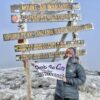Small children carry high amounts of virus; safely opening colleges will be a challenge – Reuters
– The following is a brief roundup of some of the latest scientific studies on the novel coronavirus and efforts to find treatments and vaccines for COVID-19, the illness caused by the virus.Smallest children carry highest viral loadsWhile COVID-19 viral loads have been shown to be similar in children and adults, a new study finds the youngest children – those under age five – carry particularly large amounts of the coronavirus in the nose and throat. Researchers in Chicago tested swab samples from 145 individuals ages one month to 65 years with mild to moderate COVID-19. Their analysis suggests that in the youngest children, the viral load in the upper respiratory tract was 10-fold to 100-fold greater than in adults. The viral load test results did not distinguish between infectious virus particles and non-infectious genetic material from the virus, so it is not clear whether the younger children are more likely to spread the virus. However, the researchers said on Thursday in JAMA Pediatrics, studies suggest that in young children, levels of the non-infectious genetic material may be linked with levels of active virus, and so these youngsters “can potentially be important drivers of SARS-CoV-2 spread in the general population.” (reut.rs/3gkLsam; bit.ly/2PcRttE)Safe college reopening is possible but will be challengingIf among 5,000 residential college students there are 10 with undetected coronavirus infection, all 5,000 would need to be tested for the virus every two days in order to control COVID-19 outbreaks on campus at a reasonable cost, researchers say. Their computer models assumed that students with positive tests or with COVID-19 symptoms would be moved to an isolation dormitory. “Obtaining an adequate supply of testing equipment will be a challenge,” the researchers acknowledge. “On a college campus with 5,000 enrollees, screening students every two days will require more than 195,000 test kits” during an abbreviated semester, they estimated. Reopening college campuses imposes risks that extend beyond students to the faculty, the administrative and facilities staff, and the surrounding community, the researchers note in a report on Friday in JAMA Network Open. “We believe that there is a safe way for students to return to college in fall 2020,” they said. In this study, screening every two days using a rapid, inexpensive, and even poorly sensitive test, coupled with strict interventions could yield a modest number of containable infections and be cost-effective, the researchers added. But logistically, financially, and behaviorally, this “may be beyond the reach of many university administrators,” they conclude. (bit.ly/3jXBzS3)Antibody drug, J&J vaccine candidate may hold promiseA small study of an antibody drug in nursing home patients in Cuba and one of an experimental Johnson & Johnson vaccine in primates each added to hope that additional effective treatments for COVID-19 are on the horizon. The antibody drug, itolizumab, given along with standard therapy, helped reduce inflammation and lowered the risk of intensive care admission and death among 19 moderately ill nursing home residents. All had chronic conditions such as hypertension, dementia, heart disease, diabetes and lung diseases, increasing their risk for severe COVID-19. When researchers compared them to similar elderly COVID-19 patients who did not receive itolizumab, they estimated that treating three such patients with the drug could prevent one intensive care unit (ICU) admission and one death. The study, which did not directly compare itolizumab to a placebo or other treatments, has not yet been peer-reviewed. J&J, meanwhile, has launched U.S. human safety trials for its COVID-19 vaccine candidate after data published on Thursday in Nature showed that monkeys treated with the vaccine were strongly protected with a single dose. The drugmaker said it has started early human trials of the vaccine in the United States and Belgium and would test it in more than 1,000 healthy adults aged 18 to 55 years, as well as adults aged 65 years and older. (reut.rs/2XgPuZD; reut.rs/319SWX6; go.nature.com/2Xez04o; bit.ly/2DkbOus)












